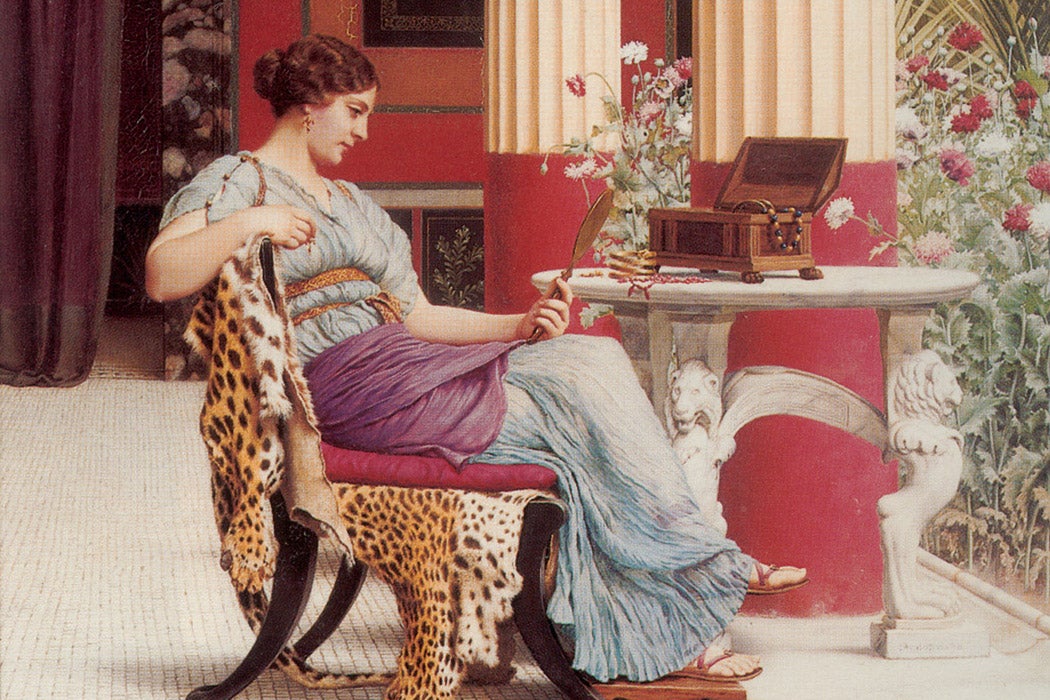As pandemic restrictions ease in the US, restaurants reopen, mask mandates lift, and vaccinated people begin to venture, hesitantly, back into the world, they squint into the sunlight. As the new day dawns, so does this realization: it’s time for a total makeover.
But where to start? For the best post-pandemic glow up, consider some beauty hacks from ancient Rome.
“Beauty culture is one of the oldest of the arts, traceable to the mythical generations of the world’s childhood,” wrote classicist Ortha Wilner back in 1931. The ancient Romans were intensely devoted to the cosmetic arts. They toiled to achieve “ideal” features, many of which are still considered “desirable” in Western beauty culture: soft, glowing skin; big eyes; long, brilliantly colored hair.
Roman toilets were stocked with a variety of oils, salves, and soft, greasy ointments for skin care. To soften the skin, most facials started with a base of antioxidant-rich honey or barley pap. The Romans would then blend in a variety of ingredients, wrote Wilner, each with its own purpose: “to heal blemishes, remove wrinkles, soften the skin, increase its clarity, stimulate color, add fragrance, etc.” Want to remove unsightly growths? Mix in some frankincense. Looking to tighten the skin and remove wrinkles? Throw together a wrinkle remover made from bean meal paste. Other common additives included myrrh, white lead, pulverized stag horn, dried rose leaves, and eggs.
Wilner drew particular attention to one “famous” softening, cleansing salve, known as oesypum. This was grease taken from unwashed sheep’s wool. “Even the best had a strong, disagreeable odor,” wrote Wilner. “It gave Ovid nausea.”
To remove unwanted spots, the Romans would grind up the intestines of a small land crocodile “which feeds only on the most fragrant flowers,” or turn to a mixture of “willow seed with saltpeter and sour wine.” But watch out: “That wine in which have been dead newts will cause freckles to appear on those who drink—an insidious weapon by which Roman ladies might have taken vengeance on their fair rivals!” wrote Wilner.
Now, with “an unblemished complexion of soft texture,” it’s time for makeup. According to Wilner, the ideal Roman beauty “required…two good eyes, long dark lashes, brows that were dark, well-shaped, and just meeting between the eyes.” Blush came from vegetable dyes, crushed poppies, and red lead. Paint of ash and antimony helped create the perfect almost-unibrow. To brighten up their smiles, Romans reached for a powder of pumice—or, in a pinch, the ashes of a wolf’s head or a dog’s teeth steeped in wine.
Weekly Newsletter
To finish off the look, the Romans colored their hair with a creative assortment of waxy ointments and dyes. (Those without flowing tresses could apply paints directly to bald or shaved heads.) Wilner cited a warning that often accompanied these dyes, stating that “the face must be greased to prevent its being stained…and the mouth must be kept full of oil until the dye is dry, lest the strength of the dye turn the teeth black.”
Nowadays, “beauty preparations…savor less of the barnyard,” observed Wilner. Still, she argued, “methods today are not as different as one might suppose.” Clearly, you can’t go wrong with the classics.







